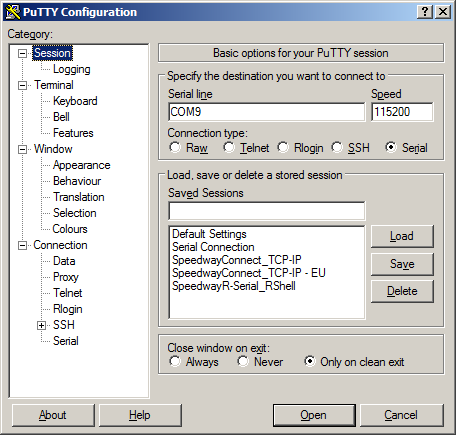Xenserver Enable Serial Console

Contributed by:CCitrix Hypervisor supports booting hosts using the UEFI mode. UEFI mode provides a rich set of standardized facilities to the bootloader and operating systems. This feature allows Citrix Hypervisor to be more easily installed on hosts where UEFI is the default boot mode.The following section contains information about setting up your TFTP and NFS, FTP, or HTTP servers to enable PXE and UEFI booting of Citrix Hypervisor server installations. It then describes how to create an XML answer file, which allows you to perform unattended installations.Configure your PXE and UEFI environment for Citrix Hypervisor installationBefore you set up the Citrix Hypervisor installation media, configure your TFTP and DHCP servers. The following sections contain information on how to configure your TFTP server for PXE and UEFI booting. Consult your vendor documentation for general setup procedures.Note:Citrix Hypervisor 6.0 moved from MBR disk partitioning to GUID Partition Table (GPT).
Some third-party PXE deployment systems might attempt to read the partition table on a machine’s hard disk before deploying the image to the host.If the deployment system isn’t compatible with GPT partitioning scheme and the hard disk has previously been used for a version of Citrix Hypervisor that uses GPT, the PXE deployment system might fail. A workaround for this failure is to delete the partition table on the disk.In addition to the TFTP and DHCP servers, you require an NFS, FTP, or HTTP server to house the Citrix Hypervisor installation files. These servers can co-exist on one, or be distributed across different servers on the network.Additionally, each Citrix Hypervisor server that you want to PXE boot must have a PXE boot-enabled Ethernet card.The following steps assume that the Linux server you are using has RPM support. Default xenserverlabel xenserverkernel mboot.c32append /tftpboot/xenserver/xen.gz dom0maxvcpus=2 dom0mem=1024M,max:1024M com1=115200,8n1 console=com1,vga - /tftpboot/xenserver/vmlinuz xencons=hvc console=hvc0 console=tty0 - /tftpboot/xenserver/install.imgA sample configuration that performs an unattended installation using the answer file at the URL specified:Note:To specify which network adapter to use to retrieve the answer file, include the answerfiledevice=ethX or answerfiledevice=MAC parameter and specify either the Ethernet device number or the MAC address of the device.
Sda sdb sdc us mypassword Europe/London Contain all nodes within a root node named installation.Note:To enable thin provisioning, specify an srtype attribute as ext. If this attribute is not specified, the default local storage type is LVM. Thin provisioning sets the local storage type to EXT3 and enables local caching for Citrix Virtual Desktops to work properly. For more information, see.The following is a summary of the elements. All node values are text, unless otherwise stated. Required elements are indicated.
Xenserver Enable Serial Console List

YesDescription: The name of the storage device where the control domain is installed. This element is equivalent to the choice made on the Select Primary Disk step of the manual installation process.Attributes: You can specify a guest-storage attribute with possible values yes and no.For example: sdaThe default value is yes. If you specify no, you can automate an installation scenario where no storage repository is created. In this case, specify no guest-disk keys. NoDescription: The name of a storage device to be used for storing guests. Use one of these elements for each extra disk.Attributes: None Required? YesDescription: The name of the keymap to use during installation.

Us The default value, us is considered if you do not specify a value for this element.Attributes: NoneYou can also perform automated upgrades by changing the answer file appropriately. Set the mode attribute of the installation element to upgrade, specify the disk on which the existing installation lives with the existing-installation element. Leave the primary-disk and guest-disk elements unspecified. The official version of this content is in English.
Some of the Citrix documentation content is machine translated for your convenience only. Citrix has no control over machine-translated content, which may contain errors, inaccuracies or unsuitable language. No warranty of any kind, either expressed or implied, is made as to the accuracy, reliability, suitability, or correctness of any translations made from the English original into any other language, or that your Citrix product or service conforms to any machine translated content, and any warranty provided under the applicable end user license agreement or terms of service, or any other agreement with Citrix, that the product or service conforms with any documentation shall not apply to the extent that such documentation has been machine translated. Citrix will not be held responsible for any damage or issues that may arise from using machine-translated content.